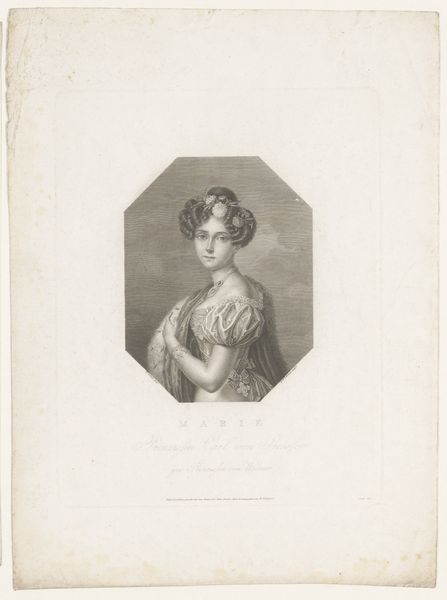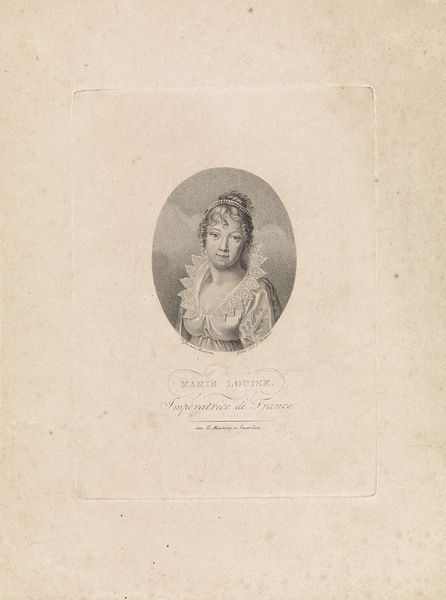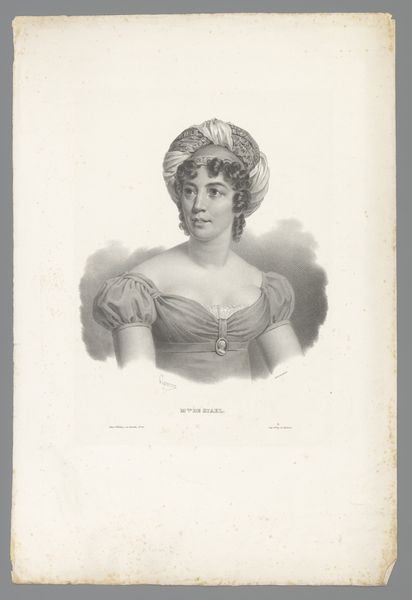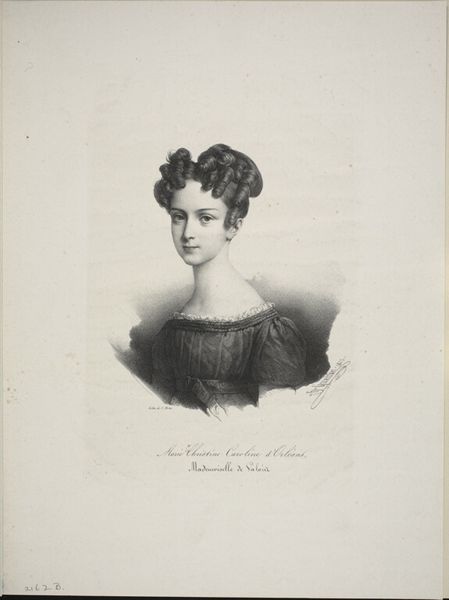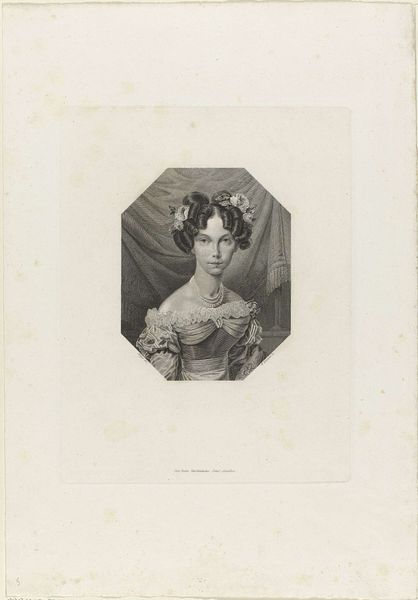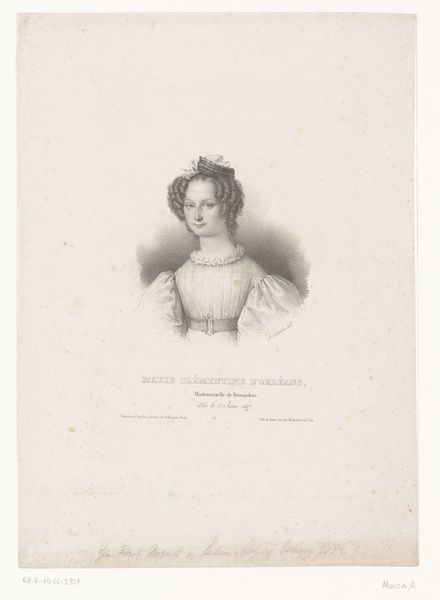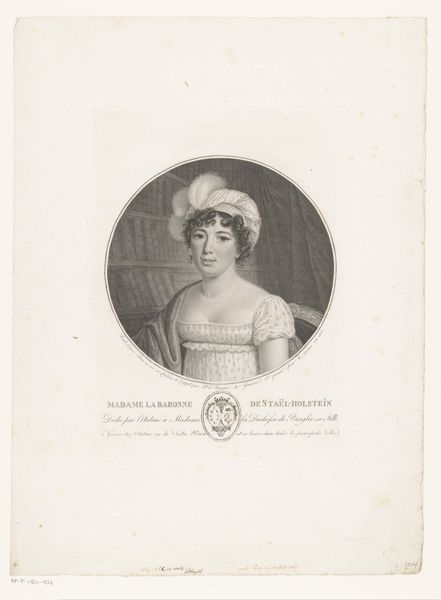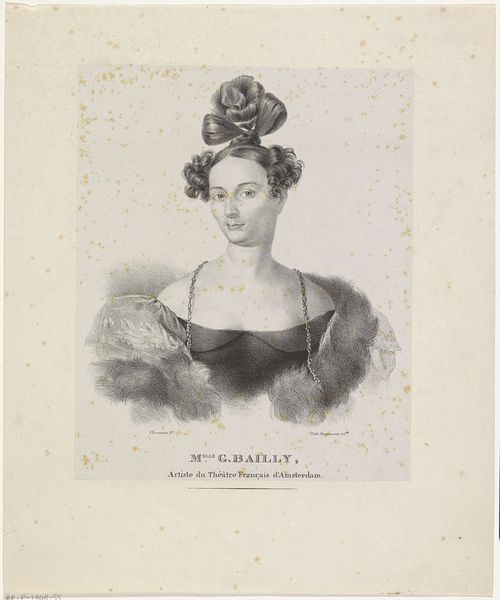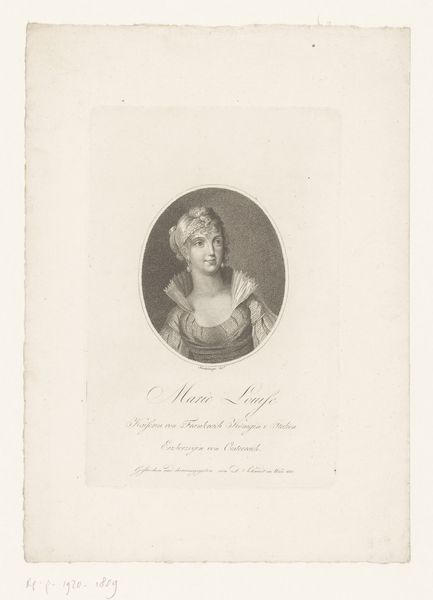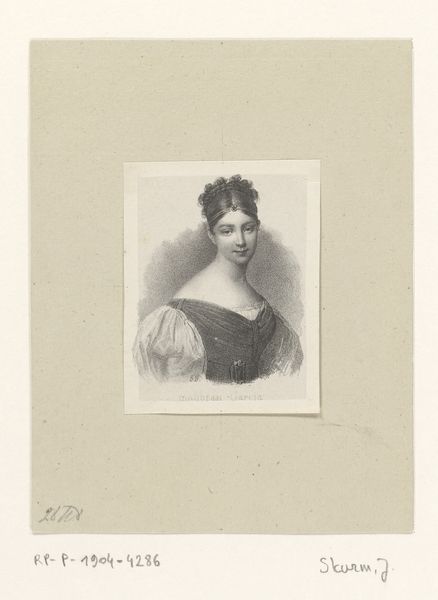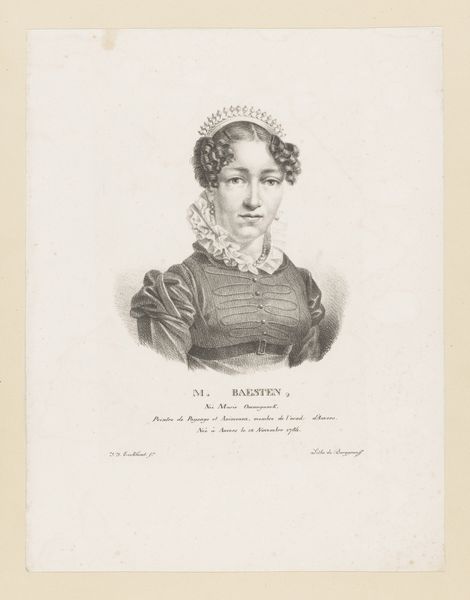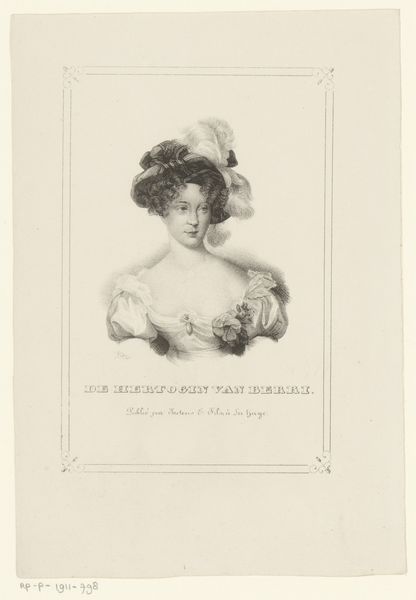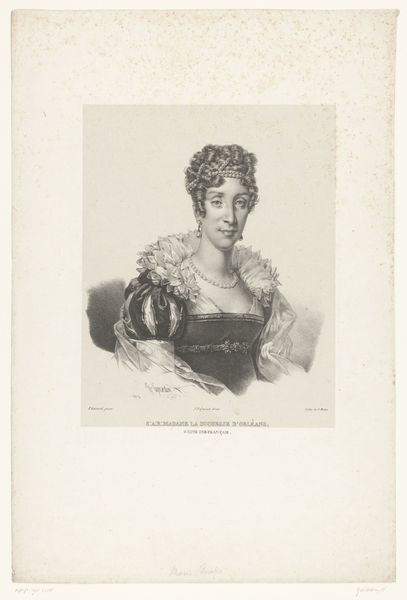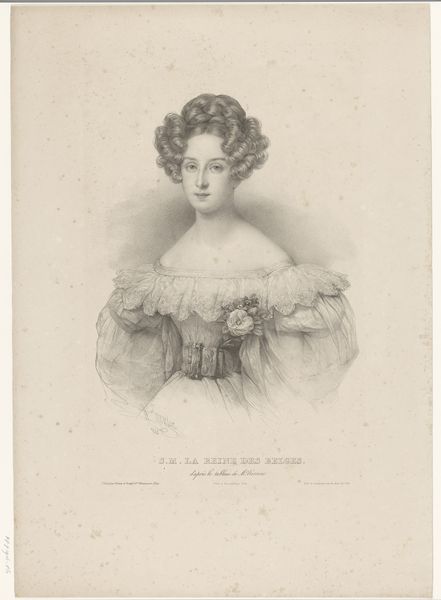
print, engraving
#
portrait
#
neoclacissism
# print
#
history-painting
#
engraving
#
realism
Dimensions: height 262 mm, width 208 mm
Copyright: Rijks Museum: Open Domain
Editor: This is a print titled "Portret van Henriëtte van Nassau-Weilburg", dating roughly between 1815 and 1899. It appears to be an engraving. The woman in the portrait is finely rendered. What does this work say to you? Curator: I immediately focus on the labour embedded in the engraving process itself. Consider the hand of the artist, meticulously carving those lines into the metal plate. This wasn't just about representation; it was about the societal structures that enabled and necessitated portraiture for the elite. Editor: Interesting! So you see the work as speaking about labour and class? Curator: Precisely! Engraving allowed for relatively mass production, but that ‘mass’ was still very exclusive. Think about who commissioned it, who could afford it, and who benefited from the distribution of these images. This portrait is as much about Henriette as it is about the network of craftspeople and patrons involved in its making and circulation. Consider too, the material value, and the accessibility for the lower classes to be limited. Editor: I hadn’t thought about it that way. It challenges the traditional view of portraits, doesn't it? Not just about capturing a likeness. Curator: Exactly! By focusing on the printmaking process and its material reality, we move beyond idealized representation and begin to understand the social dynamics at play. We're looking at power, production, and consumption interwoven. What do you make of its relationship to Neoclassicism and Realism? Does the labor in its method contribute? Editor: Yes, the blending of styles reflects societal and cultural shifts, mirrored in production methods. Curator: Precisely, seeing that these aren't disparate stylistic approaches, but are indicative of changes that occurred because of material circumstances. Editor: Thanks! I see now the value in understanding not just the image but the whole material context of its creation.
Comments
No comments
Be the first to comment and join the conversation on the ultimate creative platform.
